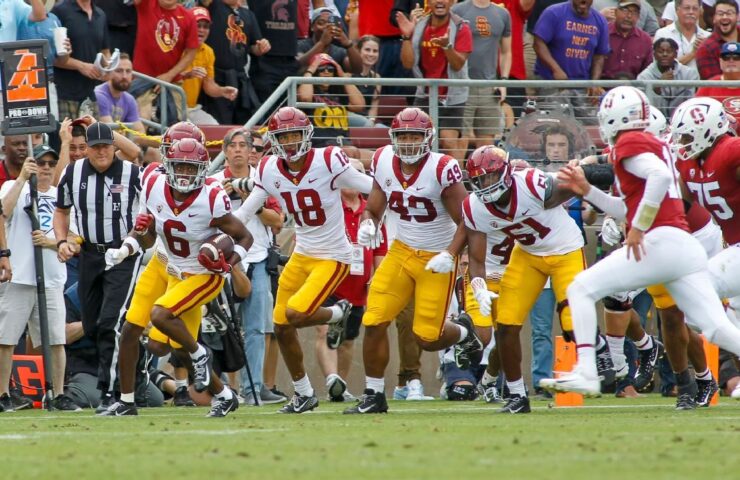
The Turnover Luck Index: Ranking every 2022 team, from USC
If you spent part of the 2022 college football season thinking, “USC can’t possibly keep getting away with this!!” then you must know this: Your hunches were as statistically sound as they were exasperated.For much of last fall, the Trojans’defense was good at one and just one thing: pouncing on the football simply in the nick of time. They did not have in almost every other department– they were 93rd in scoring defense (29.2 points per game ), 106th in overall defense( 423.9 lawns per game )and a dreadful 124th in yards allowed per play (6.5!)– however they forced 28 turnovers, sixth-most in the FBS.Every football coach in existence preaches the value of turnovers and turnover margin. However while you can impact your own turnover margin to some degree with how well you teach ball security and ball pursuit, how strongly you pursue the opponent’s quarterback, how aggressive your own offense is, et cetera, there’s still a huge quantity of fortune included here. And USC’s fortune meter was turned all the way up.In the very first 5 USC games of 2022, there were 9 fumbles, and the Trojans
recovered all nine. Fumble recoveries go back to 50%over a long adequate amount of time, but USC got to an 11-1 record by having actually recovered 18 of 23 (78%). While a team typically intercepts about one pass to every four pass separations, their regular-season ratio was 1-to-1.9, and their interceptions amount to was 7 greater than national averages would suggest.The INT ratio fell back to the mean late in the season, and the fumble healings will probably do the same quickly enough.
Luck and randomness play a massive function in the game of football– particularly the variation played by 18 -to 22-year-olds– and as we slowly prepare for 2023, let’s have a look at who benefited the most from the bounce of the ol’ pointy football.Fumble healing rates Certainly, over a big enough period of time, a team will recuperate about 50%of all fumbles.
